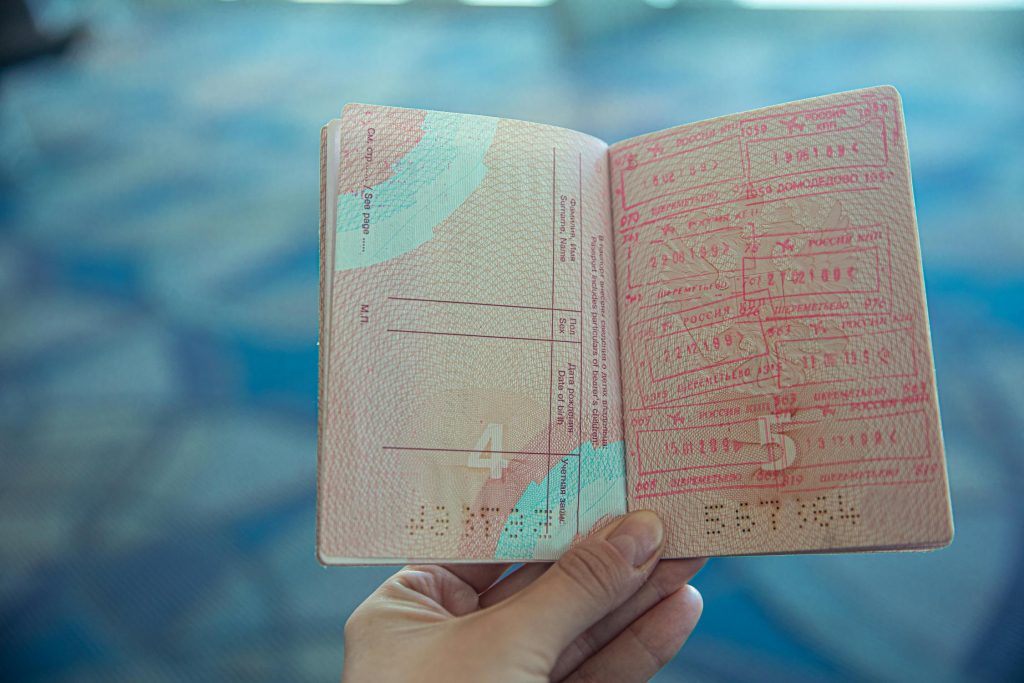ETIAS Visa Waiver for US Citizens – What to Know Before Your Europe Trip
If you’re a U.S. citizen planning a trip to Europe, there’s an important update you need to know before you pack your bags and head to the airport. Starting in mid-2025, the European Union (EU) is introducing a new travel authorization system called ETIAS — short for European Travel Information and Authorization System. This new requirement affects travelers from visa-exempt countries, including the United States, and it’s designed to enhance border security across Europe’s Schengen Area.
So, what exactly is ETIAS, how does it work, and what should you do before you plan your next European vacation or business trip? Here’s everything U.S. travelers need to know.

What is ETIAS?
ETIAS is not a visa, but rather a travel authorization similar to the ESTA (Electronic System for Travel Authorization) used by the United States for visitors from visa-exempt countries. It’s part of the EU’s strategy to improve security by pre-screening travelers before they arrive at European borders.
The ETIAS system was originally proposed in 2016 and will be fully operational in mid-2025. Once in effect, it will be mandatory for citizens of more than 60 countries, including the United States, who wish to enter Schengen Area countries for short stays of up to 90 days within a 180-day period.
Why Is ETIAS Being Introduced?
The EU is introducing ETIAS primarily for security reasons. With the increasing threats of terrorism, cybercrime, and irregular migration, the EU aims to better identify potential risks posed by travelers before they arrive.
By gathering basic biographical information and conducting background checks through EU security databases like Europol, Interpol, and the Schengen Information System (SIS), ETIAS helps identify high-risk individuals and prevent them from entering Schengen countries.

Which Countries Require ETIAS?
ETIAS will be required for entry into all 27 countries in the Schengen Area, which includes most EU countries as well as a few non-EU nations. These include:
Austria, Belgium, Croatia, Czech Republic, Denmark, Estonia, Finland, France, Germany, Greece, Hungary, Iceland, Italy, Latvia, Liechtenstein, Lithuania, Luxembourg, Malta, Netherlands, Norway, Poland, Portugal, Slovakia, Slovenia, Spain, Sweden, Switzerland.
Note: Countries in the EU but not part of the Schengen Area (such as Ireland, Romania, Bulgaria, and Cyprus) have their own entry rules, though some may implement ETIAS in the future.

Do U.S. Citizens Need a Visa for Europe?
No. U.S. citizens do not need a visa to visit Schengen Area countries for short stays (up to 90 days) for tourism, business, or transit. However, once ETIAS is implemented, you must obtain an ETIAS authorization before your trip.
This means ETIAS is an additional requirement for visa-free travel, but it doesn’t change your visa-exempt status. Think of it as a pre-approval needed to board your flight or cross the border.
How to Apply for ETIAS?
The application process for ETIAS is straightforward and entirely online. Here’s how it works:
Step 1: Access the Official ETIAS Website or App
You’ll visit the official ETIAS portal, managed by the European Union, and fill out the application form. Make sure you are on the official EU site to avoid scams.
Step 2: Provide Required Information
You’ll need to enter personal details such as:
Full name
Date and place of birth
Passport number and expiration date
Contact details
Travel details (first country of entry, purpose of visit)
Background questions about criminal history, travel to conflict zones, etc.
Step 3: Pay the Fee
The ETIAS application will cost €7 (about $8), and it’s free for travelers under 18 and over 70.
Step 4: Wait for Approval
In most cases, applications are processed within minutes. However, some applications may take up to 96 hours if additional checks are required. In rare cases, it could take up to 30 days.
Once approved, you’ll receive an email confirmation with your ETIAS authorization, which is digitally linked to your passport.
Validity and Duration
Once granted, your ETIAS travel authorization is valid for three years or until your passport expires, whichever comes first. During its validity, you can travel to Schengen countries for up to 90 days within any 180-day period, multiple times.
Important: If you renew or replace your passport, you will need to apply for a new ETIAS, as the authorization is linked to your passport number.
What If You’re Denied?
If your ETIAS application is denied, you will receive a reason for the refusal and have the right to appeal the decision in the EU country responsible for processing your application. Without ETIAS approval, you will not be allowed to board flights, ferries, or buses into the Schengen Area.
When Will ETIAS Be Mandatory?
As of June 2025, ETIAS is not yet in effect, but it is expected to become mandatory in mid-2025. Once implemented, you will need to apply before any trip to Europe. The EU will launch an official awareness campaign closer to the date to inform travelers.
Until then, U.S. citizens can continue to travel to the Schengen Area without an ETIAS authorization, but it’s wise to stay informed and plan ahead for future trips.

Tips for U.S. Travelers
Apply Early: Don’t wait until the last minute. Apply for ETIAS as soon as your travel dates are confirmed.
Check Your Passport: Make sure your passport is valid for at least 3 months beyond your intended stay in Europe.
Use the Official ETIAS Site: Avoid unofficial websites that may charge extra fees or be fraudulent.
Understand the Rules: ETIAS does not guarantee entry. Final admission is still up to border authorities.
Keep a Copy: While ETIAS is digital, it’s a good idea to keep a printed or saved copy of your authorization confirmation.
Common Questions (FAQ)
Q: Is ETIAS a visa?
A: No. ETIAS is a visa waiver or travel authorization, not a visa.
Q: How long can I stay in Europe with ETIAS?
A: You can stay for up to 90 days within any 180-day period.
Q: Can I visit multiple countries with one ETIAS?
A: Yes. ETIAS allows travel throughout the entire Schengen Area.
Q: Is ETIAS required for work or study in Europe?
A: No. ETIAS is only for tourism, business, and transit. If you plan to work or study, you will need a proper visa or permit from the specific country.
Q: What happens if I forget to apply?
A: Without an ETIAS, you will not be allowed to board your flight or enter any Schengen country.

Final Thoughts
The upcoming ETIAS requirement is a minor but essential change in how U.S. citizens travel to Europe. While it introduces an extra step in planning your trip, the process is fast, inexpensive, and designed to keep both travelers and residents safe.
By staying informed and prepared, you can avoid last-minute issues and ensure a smooth journey across some of the world’s most beautiful and historic destinations. So as you map out your European adventure — whether it’s sipping wine in Tuscany, skiing in the Alps, or exploring the cobblestone streets of Prague — make sure ETIAS is on your pre-trip checklist.











